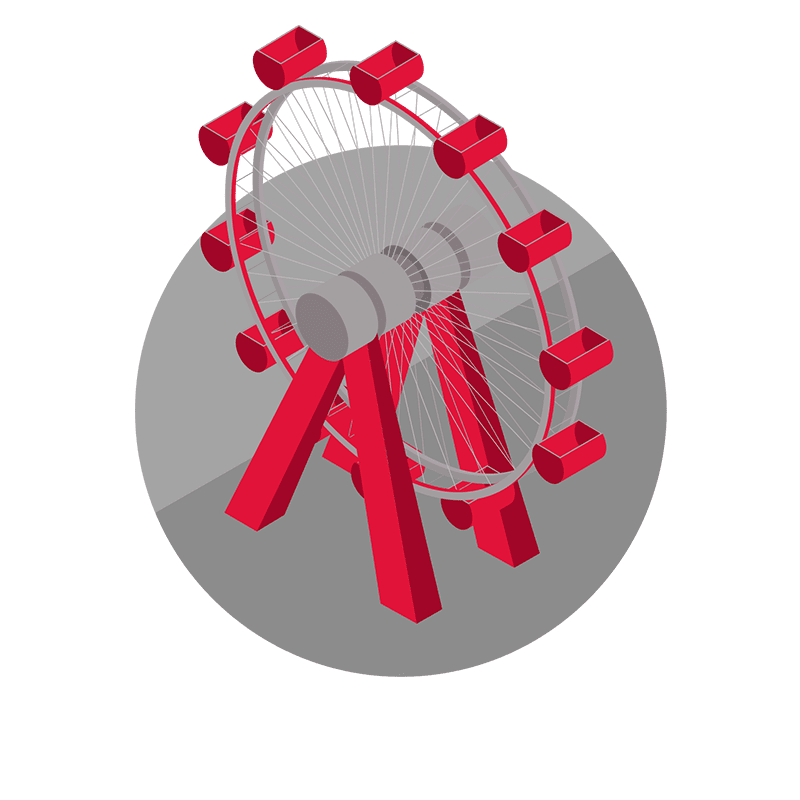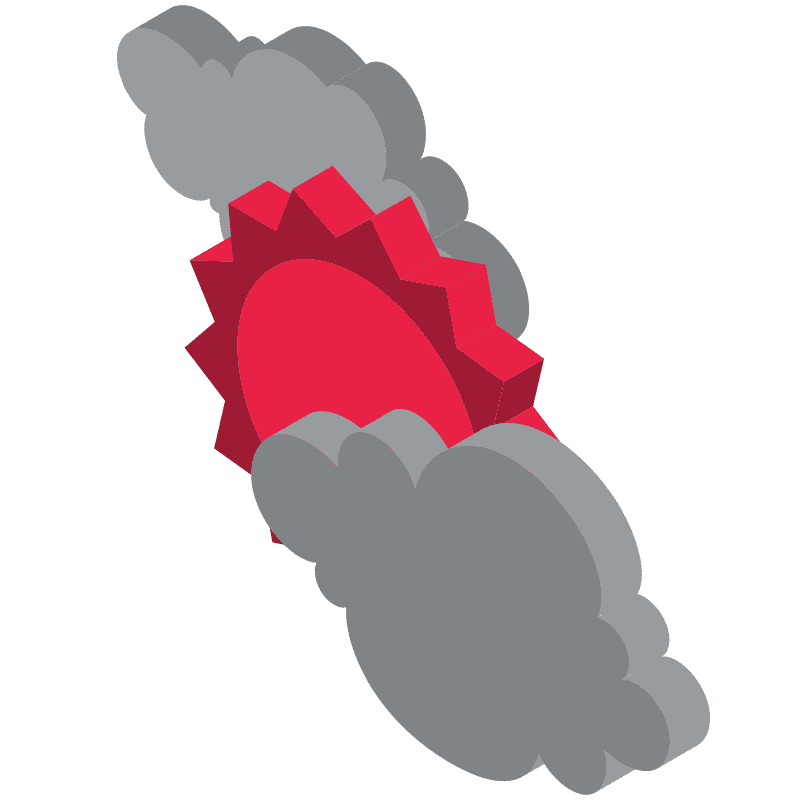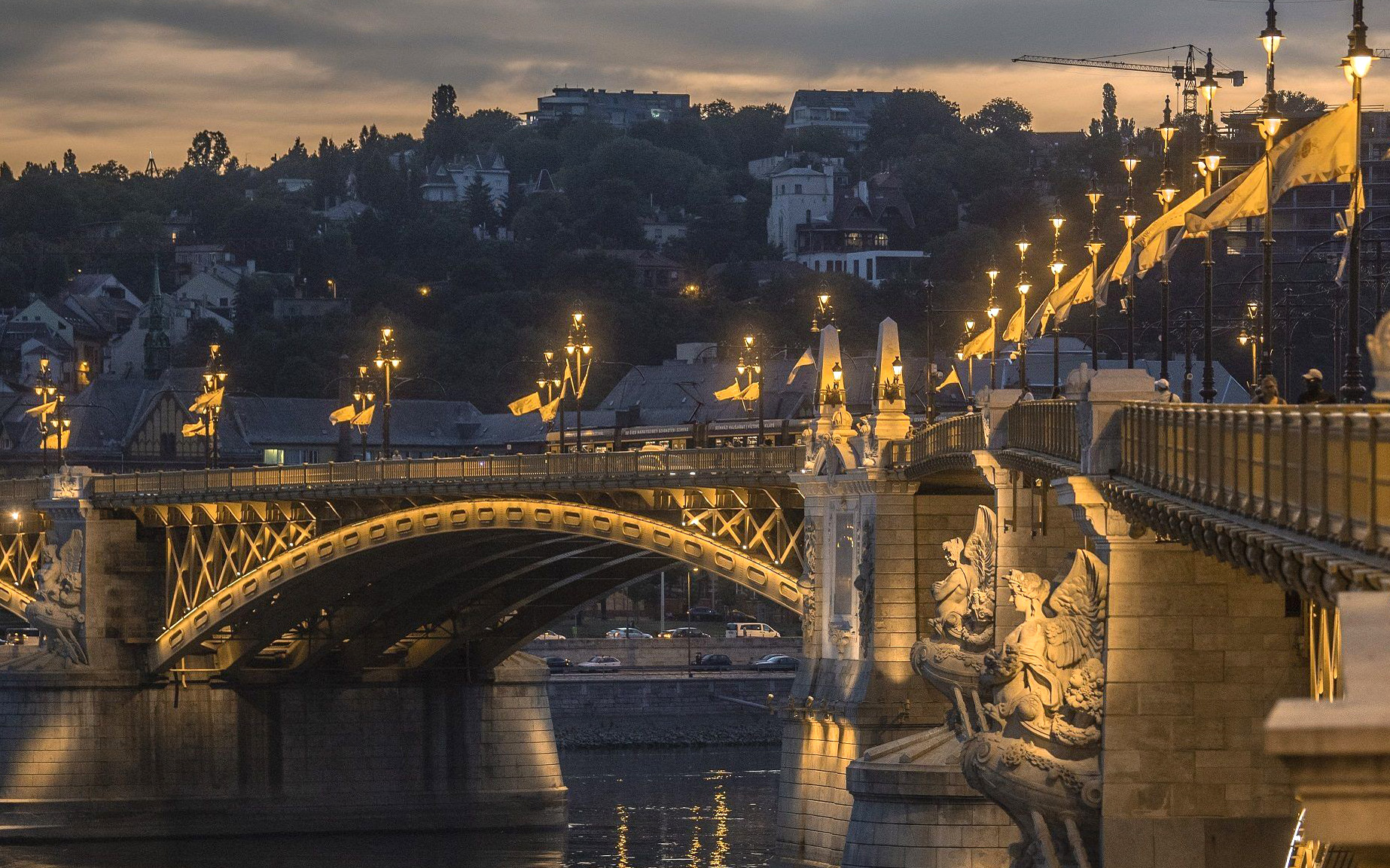
The bridges of Budapest
Budapest’s skyline and beauty are almost worthless without the Danube. The Danube, which bisects the city, is the second longest river in Europe and forms an important part of the Budapest panorama. The bridges over the Danube are responsible for easy transport between Buda and Pest.
Although visitors to most cities only see the bridges in the central part of the city, Budapest has a total of 15 bridges, which are far different in age and architectural style – but each of the bridges contributes to Budapest’s cityscape. In our blog article, we will present the history of these bridges, along with their interesting features.
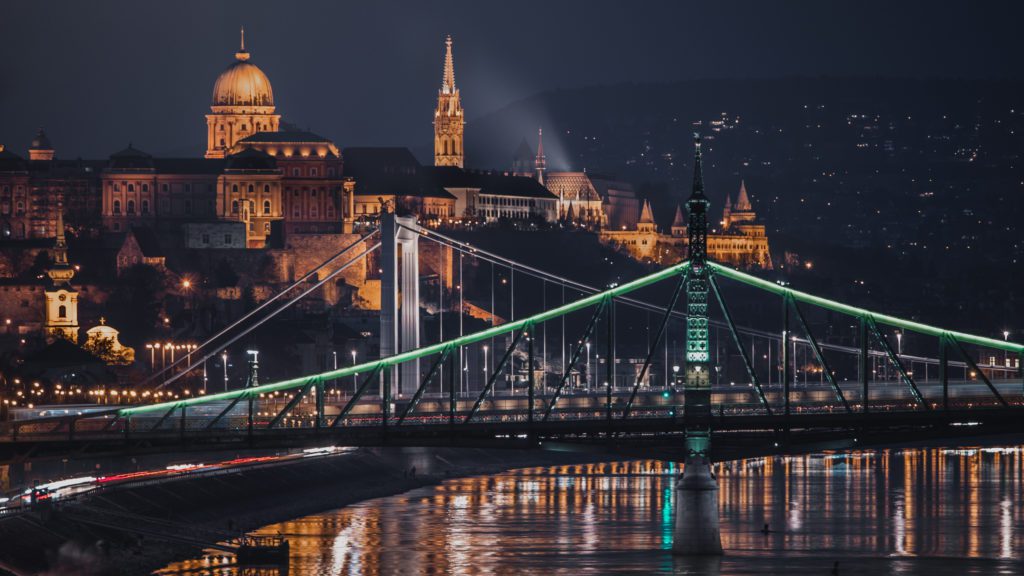
Source: Lepsik Norbert
Megyeri bridge
The facility, handed over in 2008, is Budapest’s northernmost bridge, which forms part of the M0 highway that surrounds Budapest. With its length of 1,862 meters, it also won the award for the second longest bridge in Hungary. The name of the bridge could be decided in the framework of an internet vote, where after the votes were tallied, the name Megyeri bridge was followed by the Chuck Norris bridge.
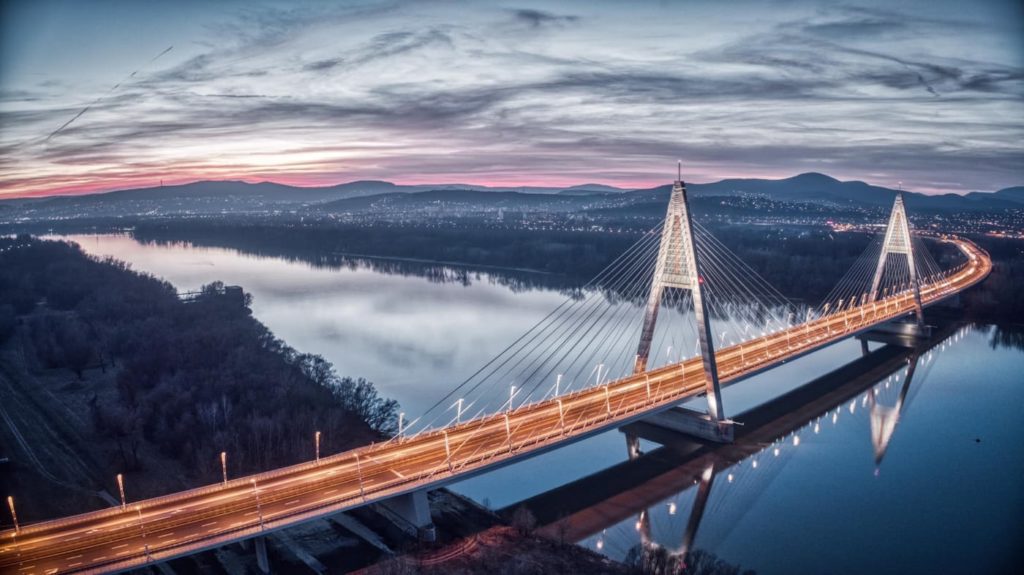
Source: CsodalatosBudapest
Újpest railway bridge
The Újpest Railway Bridge, also known as the Northern Link Railway Bridge, is primarily used for railway traffic, but it is also part of many cycling routes. The Római part, popular with the locals, can also be reached comfortably by crossing this bridge.
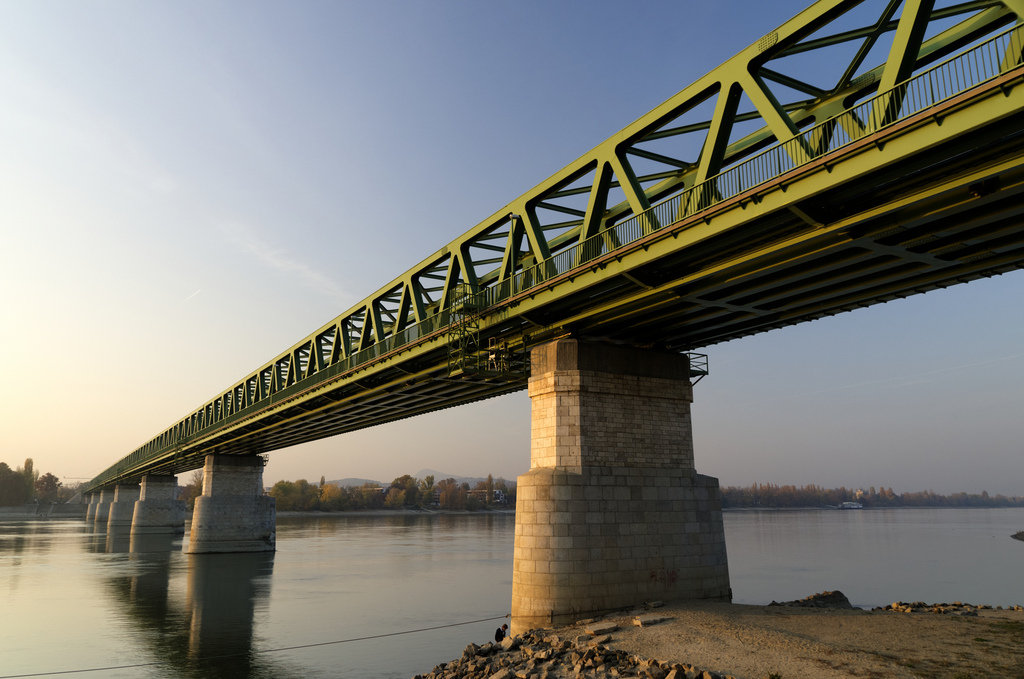
Source: Digitális Képarchívum
K-bridge
The K-híd connects the Óbuda area with Óbuda Island, where the Sziget Festival is also held in the summer. It got its name because of the design of the bridge structure, as the riveted beams fit together in a K shape.
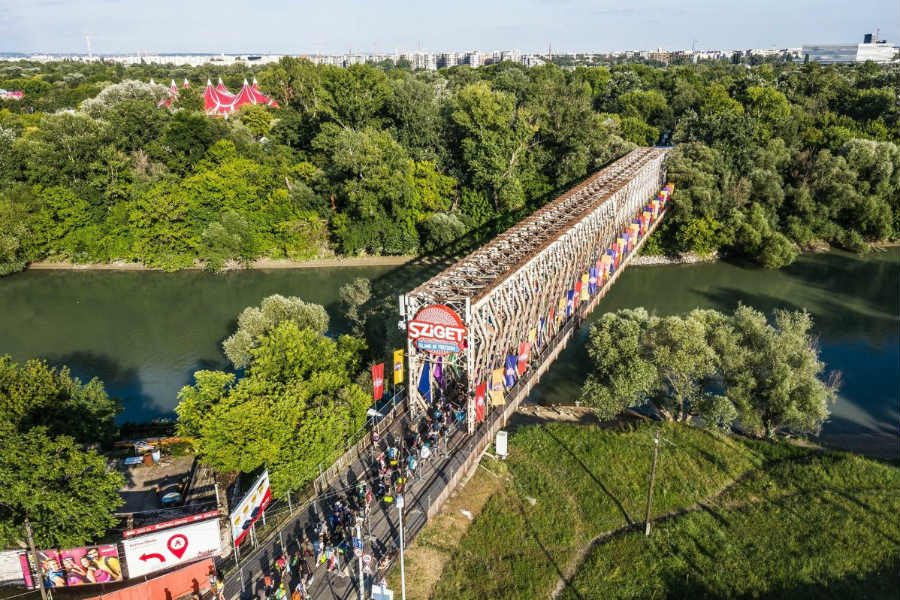
Source: I Love Dunakanyar
Hajógyári Bridge
The bridge built in 1858 was the first permanent crossing between Buda and Óbuda Island. The interesting thing about the bridge is that it was the only wooden drawbridge in the country, so when ships taller than the bridge arrived, the middle opening of the crossing could be pushed along its longitudinal axis, thereby providing a way for the Danube’s boat traffic.
Árpád Bridge
Approaching downtown Budapest, the next Danube bridge is the Árpád Bridge, which crosses the river above the northern tip of Margaret Island. The interesting thing about the bridge is that when the bridge was expanded, a new bridge section was built on both sides of the existing bridge structure, so that the Árpád bridge actually consists of three units running in parallel.
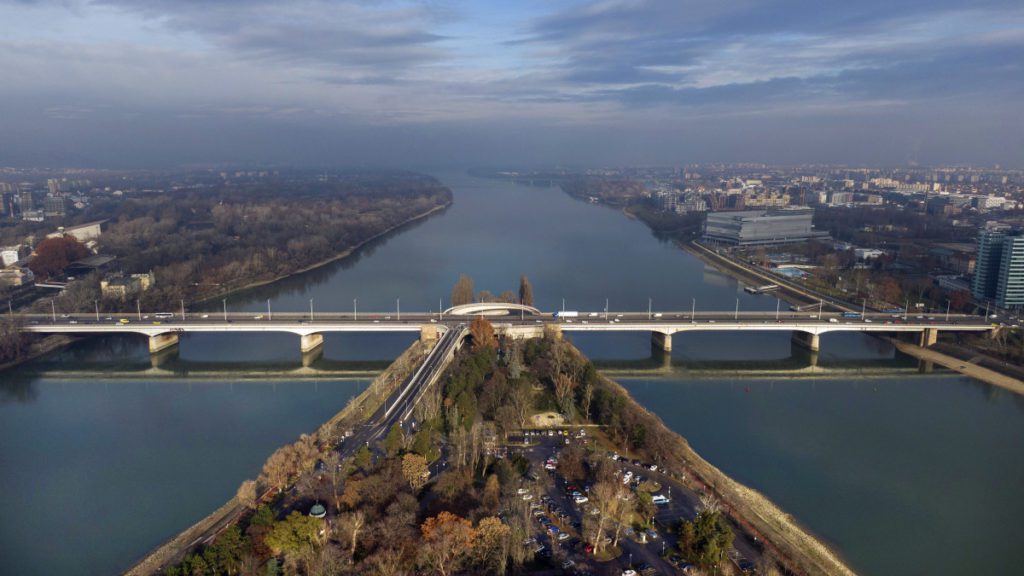
Source: Infostart
Margaret Bridge
Margaret Bridge is Budapest’s second permanent bridge, which was completed in 1876. During the Second World War, this bridge was the first to be blown up, and it was rebuilt only in 1948. The reconstruction of the bridge in 2009 lasted two years, during which it was a priority to restore the bridge to its pre-World War II appearance and decorative elements.
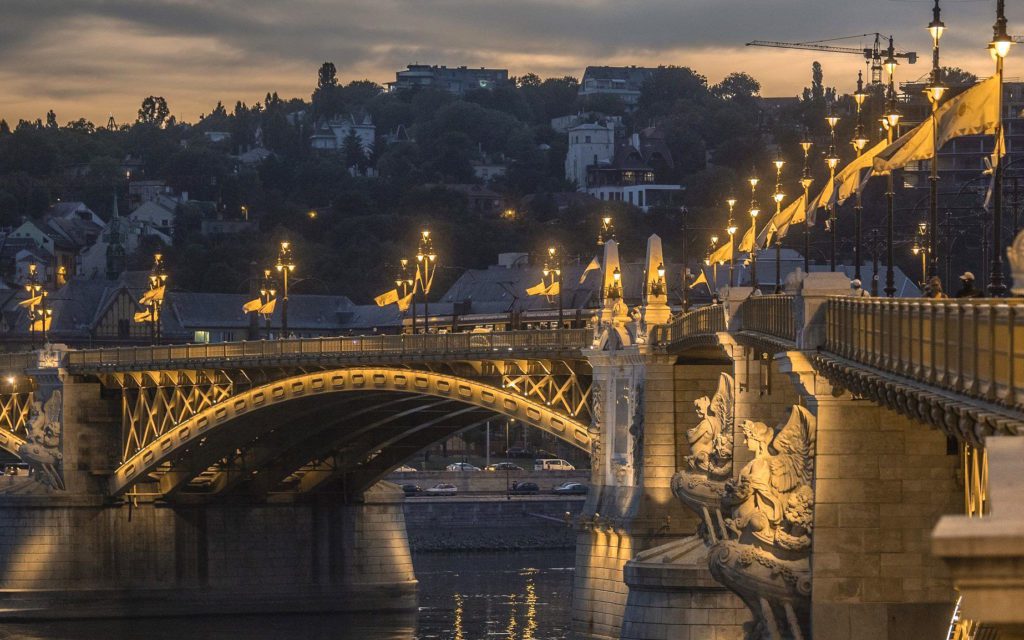
Source: Budapesti Városvédő Egyesület
Széchenyi Chain Bridge
The Chain Bridge (Lánchíd) is Budapest’s iconic downtown bridge, which is almost impossible to avoid during your visit to Budapest. The bridge, which is considered one of the symbols of the capital, was the very first permanent crossing between the two parts of the city, which was handed over in 1849. In the Second World War, this bridge was also heavily destroyed, and its reconstruction is currently underway with an estimate finish at the end of 2023.
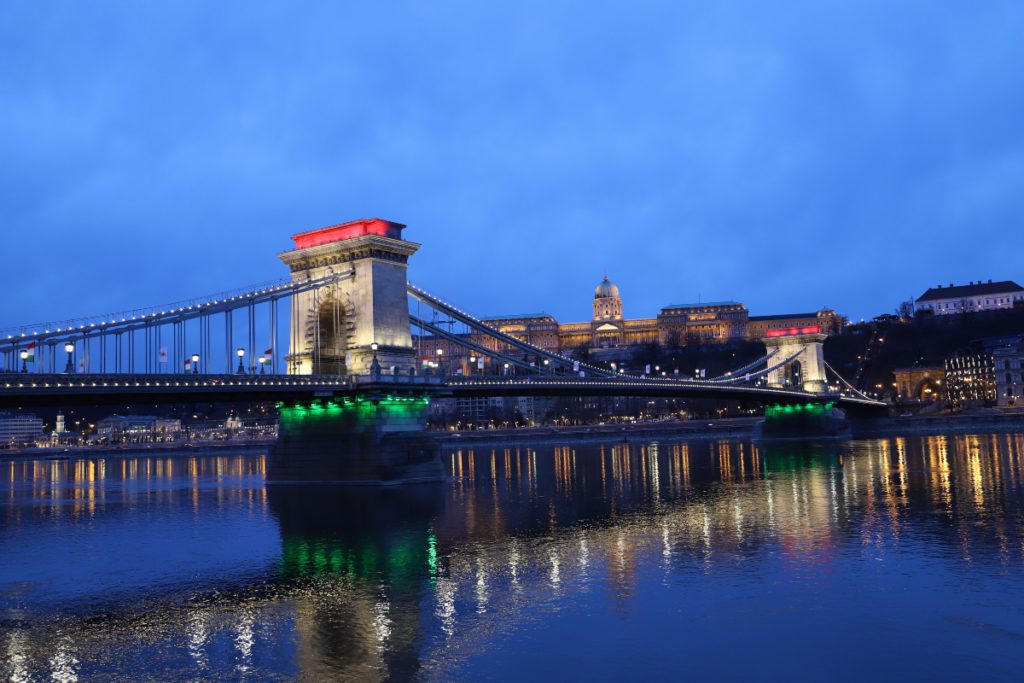
Source: Lepsik Norbert
Elizabeth Bridge
The Elizabeth Bridge was named after Sissi, the Habsburg queen, and spans the Danube as Budapest’s fourth permanent bridge. The structure of the originally built bridge was so damaged during the Second World War that it was not possible to reconstruct it. Most of Budapest’s bridges were rebuilt in the years following the war, but the Elizabeth Bridge was opened only in 1964. Unfortunately, the original plans of the bridge could not be used during the reconstruction, so a new structure was built to serve the increasing car traffic, but the name of the bridge was kept.
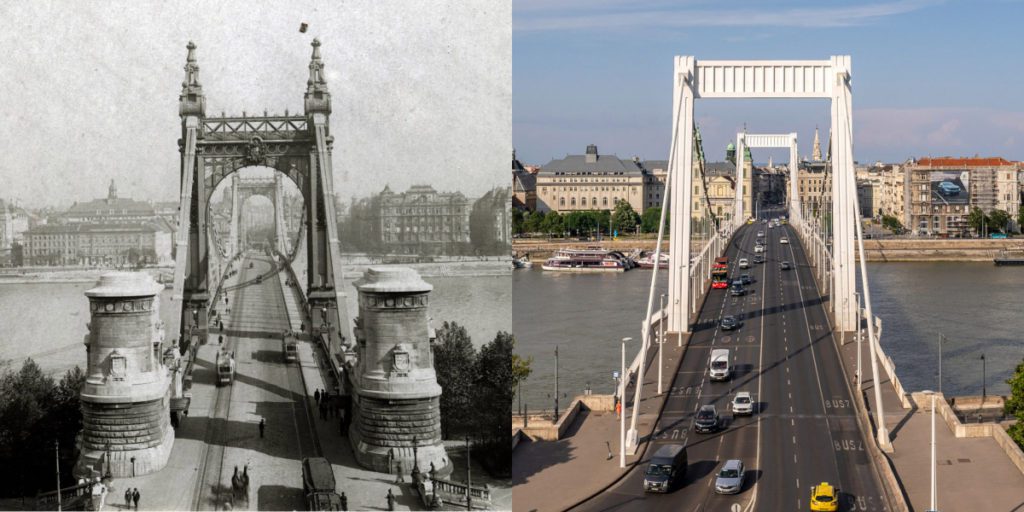
Source: pestbuda
Freedom Bridge
The original name of the Freedom Bridge was Ferenc József Bridge, as the bridge itself was inaugurated by Emperor Ferenc József. During the Second World War, this bridge was also blown up, but the structure of this bridge was damaged the least, so it was handed over as soon as possible, in 1946. The bridge was then renamed the Szabadság bridge (Freedom Bridge), which is still in use today. Although it was possible to restore the bridge to its original form during the reconstruction, it could not get its characteristic green color due to the lack of suitable paint. Thus, the bridge was painted gray, and it was only in 1984 that it regained its distinctive green color, which is still visible today.
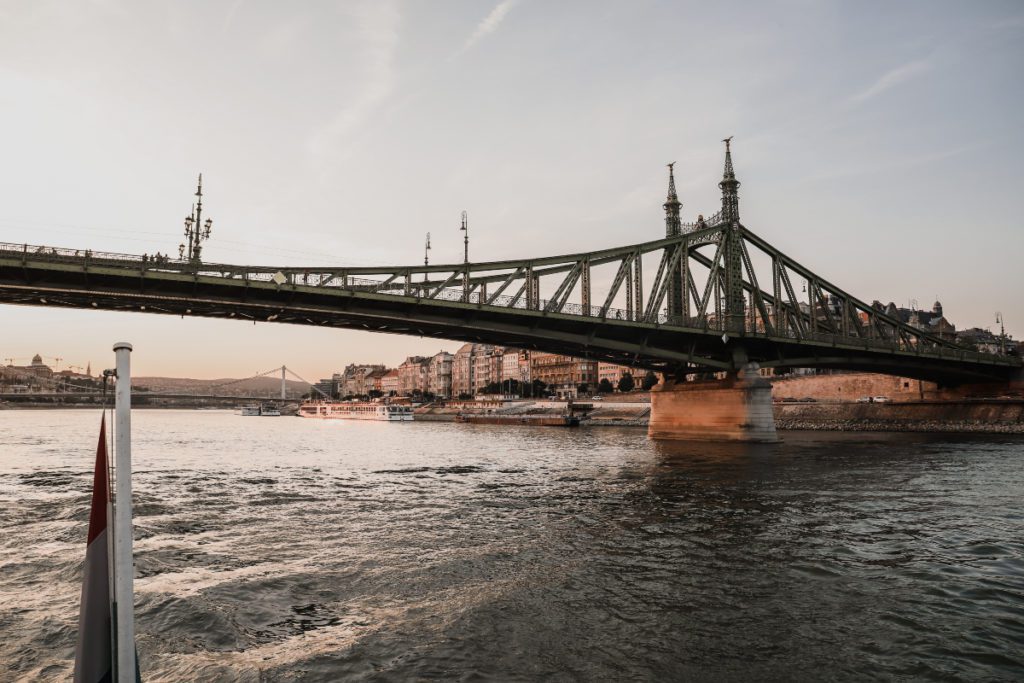
Source: Lepsik Norbert
Petőfi Bridge
When the Petőfi Bridge was built in 1937, it was originally called Horthy Miklós Bridge, which was also renamed during the reconstruction after the bridge was blown up. Although the bridge does not have a large amount of decorative elements in terms of its appearance, it is an essential part of Budapest’s traffic flow.
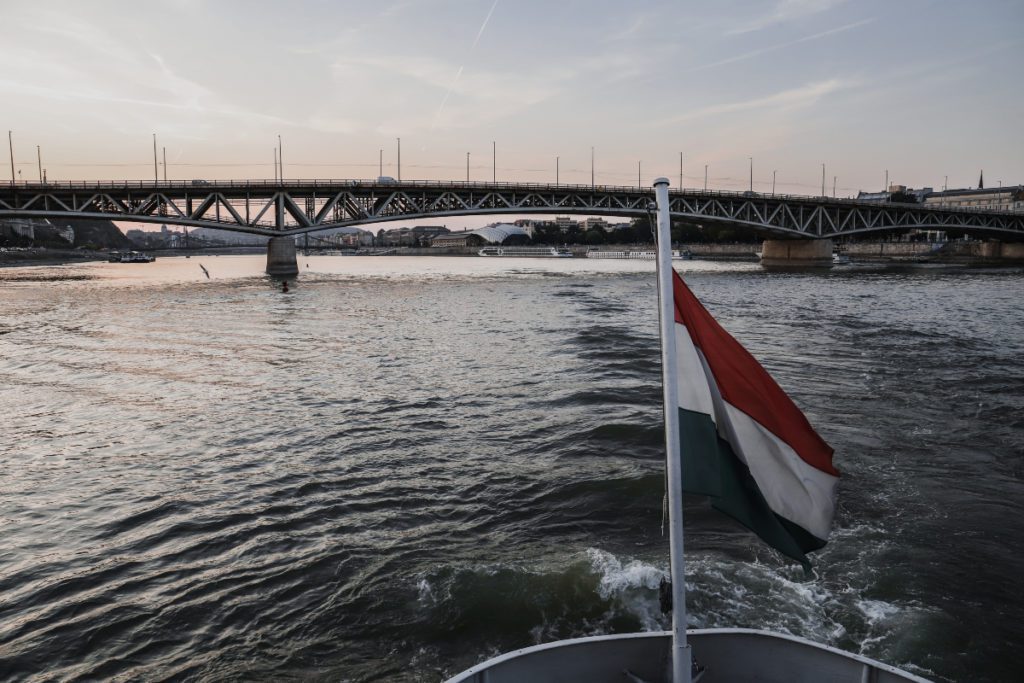
Source: Lepsik Norbert
Rákóczi bridge
The Rákóczi Bridge (previously known as the Lágymányos Bridge) was only handed over in October 1995, making it the second youngest bridge in Budapest and embellishing the Danube panorama. Right next to the bridge is the Southern Railway Bridge, which is an important route in Budapest’s railway traffic.
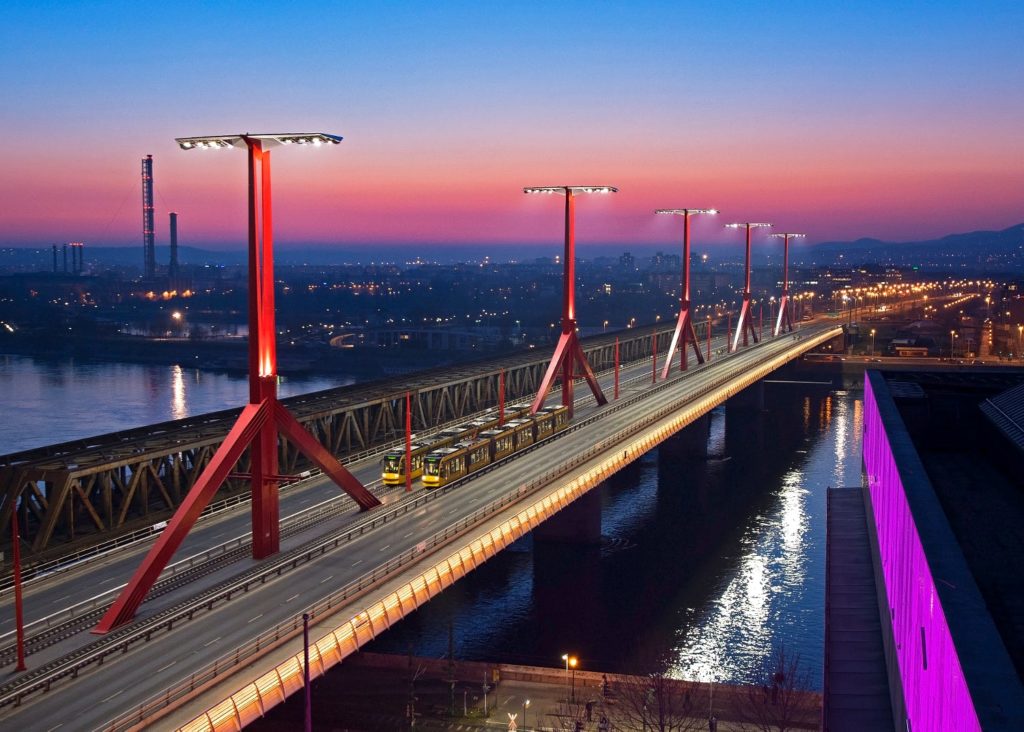
Source: Mageba
Bridges of Csepel
Csepeli Island is located in the southern part of Budapest, which can be reached via three bridges (within the administrative area of Budapest). These are the Kvassay Bridge, Gubacsi Bridge and Deák Ferenc Bridge, the last one is part of the M0 highway.
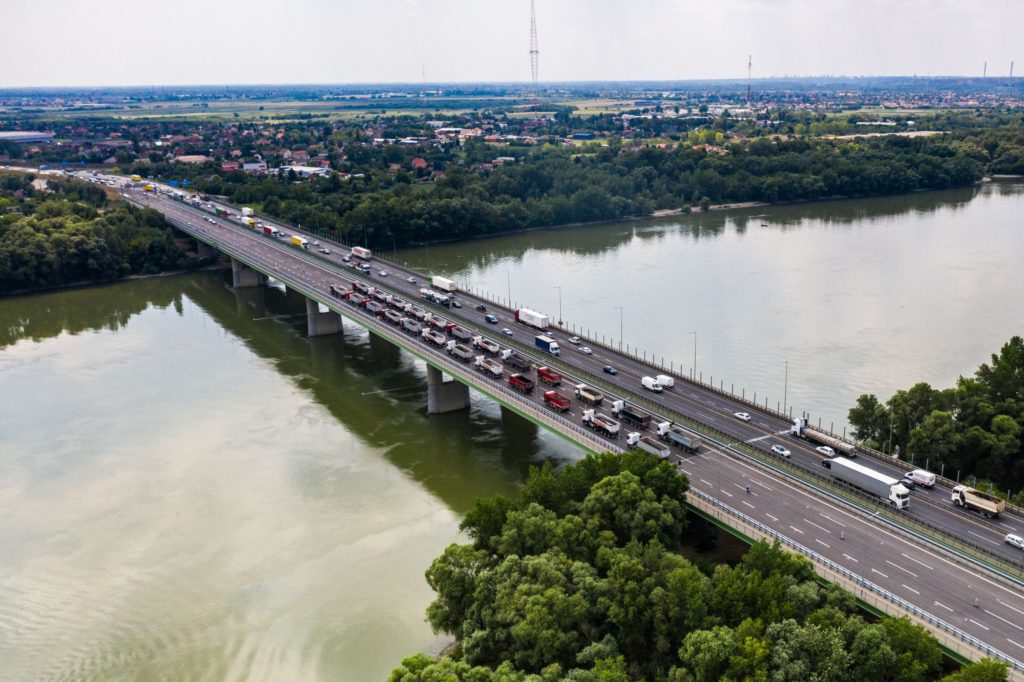
Source: Nif Zrt.
Each of Budapest’s bridges is unique, both in terms of their appearance and our history. The basic sights of the Budapest skyline, which every visitor must admire. There is no better way to imagine this than as part of a Danube boat tour, where we can admire these bridges from the water of the Danube.





